
The native states of India, also known as feudatory or princely states, were typically vassals under a local or regional ruler who owed allegiance to the British Raj. There were about 675 native states in all but many were not parts of British India proper because they never become possessions of the British Crown; rather, they were tied to it in a system of subsidiary alliances. Following the Partition of India in 1947, the suzerainty of the Raj was terminated and native states had to choose between independence or formal accession by either India or Pakistan. In practice, all of the native states had acceded or been annexed by the end of 1949.

This is an overview of the postage stamps and postal history of Australia. encompassing some history of the Australian colonies and the main stamp issues that followed the takeover of the colonies as well as later issues and also an precis of the external territories.

The British Central Africa Protectorate existed in the area of present-day Malawi between 1891 and 1907.
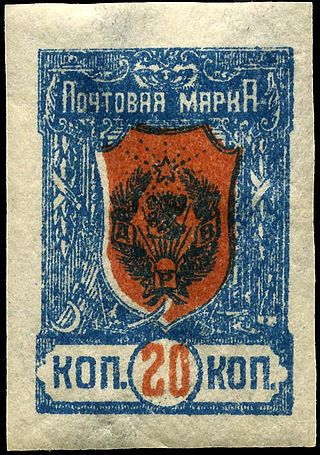
The Far Eastern Republic, sometimes called the Chita Republic, existed from April 1920 to November 1922 in the easternmost part of Siberia. It was formed from the Amur, Transbaikal, Kamchatka, Sakhalin, and Primorye regions. In theory, it extended from Lake Baikal to Vladivostok but, in May 1921, the Priamur and Maritime Provinces seceded. Although nominally independent, it was largely controlled by the RSFSR and its main purpose was to be a democratic buffer state between the RSFSR and the territories occupied by Japan during the Russian Civil War to avoid war with Japan. Initially, its capital was Verkhneudinsk, but from October 1920 it was Chita. On 15 November 1922, after the war ended and the Japanese withdrew from Vladivostok, the Far Eastern Republic was annexed by Soviet Russia.
This is a survey of the postage stamps and postal history of Bechuanaland Protectorate.
Each "article" in this category is a collection of entries about several stamp issuers, presented in alphabetical order. The entries are formulated on the micro model and so provide summary information about all known issuers.

The postage stamps of Ireland are issued by the postal operator of the independent Irish state. Ireland was part of the United Kingdom of Great Britain and Ireland when the world's first postage stamps were issued in 1840. These stamps, and all subsequent British issues, were used throughout Ireland until the new Irish Government assumed power in 1922. Beginning on 17 February 1922, existing British stamps were overprinted with Irish text to provide some definitives until separate Irish issues became available within the new Irish Free State. Following the overprints, a regular series of definitive stamps was produced by the new Department of Posts and Telegraphs, using domestic designs. These definitives were issued on 6 December 1922, the day that the Irish Free State officially came into existence; the first was a 2d stamp, depicting a map of Ireland. Since then new images, and additional values as needed, have produced nine definitive series of different designs.
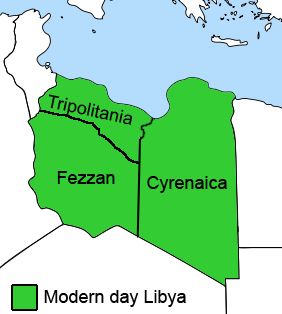
This is a survey of the postage stamps and postal history of Tripolitania, now part of Libya.
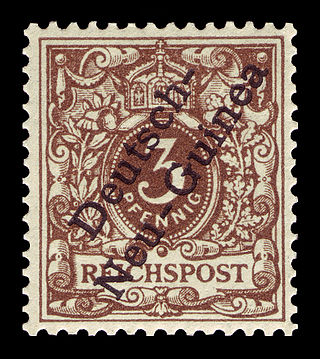
The postage stamps of New Guinea, part of present-day Papua New Guinea, were issued up to 1942.

The postage stamps and postal history of Christmas Island, in the Indian Ocean, was linked to its original economic situation until 1993. Mainly ruled by a phosphate production commission, the island was part of the British Straits Settlements colony from 1901 to 1942, then of Singapore from 1946 to 1958. Although it was placed under Australian control in 1958, the island remained postally and philatelically independent until 1993 when Australia Post became the island's postal operator.

The postage stamps and postal history of the Cocos (Keeling) Islands are linked to those of the two British colonies and of Australia to which the Indian Ocean archipelago was successively attached.
Bangladesh first issued its own postage stamps upon gaining independence in 1971. A set of eight stamps, with various motifs including a map of the country, were issued. Shortly after, stamps in eight values were overprinted "Bangladesh Liberated" in both English and Bengali were prepared in the United Kingdom, but only three values were issued in Bangladesh.

The postage stamps and postal history of Norfolk Island depended on Australia until 1947, when the island, an Australian territory since 1914, received its own stamps and postal autonomy.

Bahrain first used the postage stamps of British India before eventually issuing its own stamps in 1960.

The Post Office of India of the British Raj entered into postal conventions with a few native states of India. As per the postal convention, existing adhesive stamps and postal stationery of British India were overprinted with the name of the state for use within each convention State, for mail from one convention state to another, and to destinations in British India. The state administrations, in turn, had to conform to a number of agreements covering the issuance of stamps, the rates of postage, and the exchange of mail.
This is a survey of the postage stamps and postal history of Brunei.
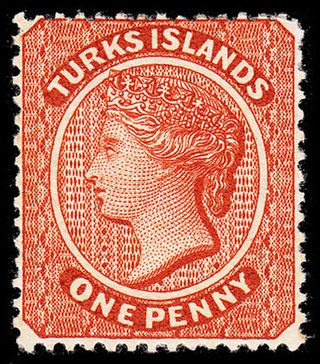
Postage stamps have been issued in the Turks and Caicos Islands since 1867.

This is a survey of the postage stamps and postal history of Ghana, known as the Gold Coast before independence.

This is a survey of the postage stamps and postal history of Togo.
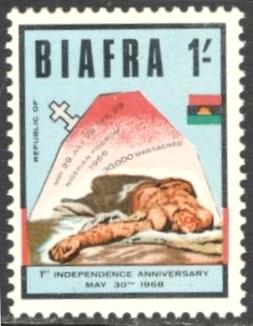
This is a survey of the postage stamps and postal history of Biafra.




















